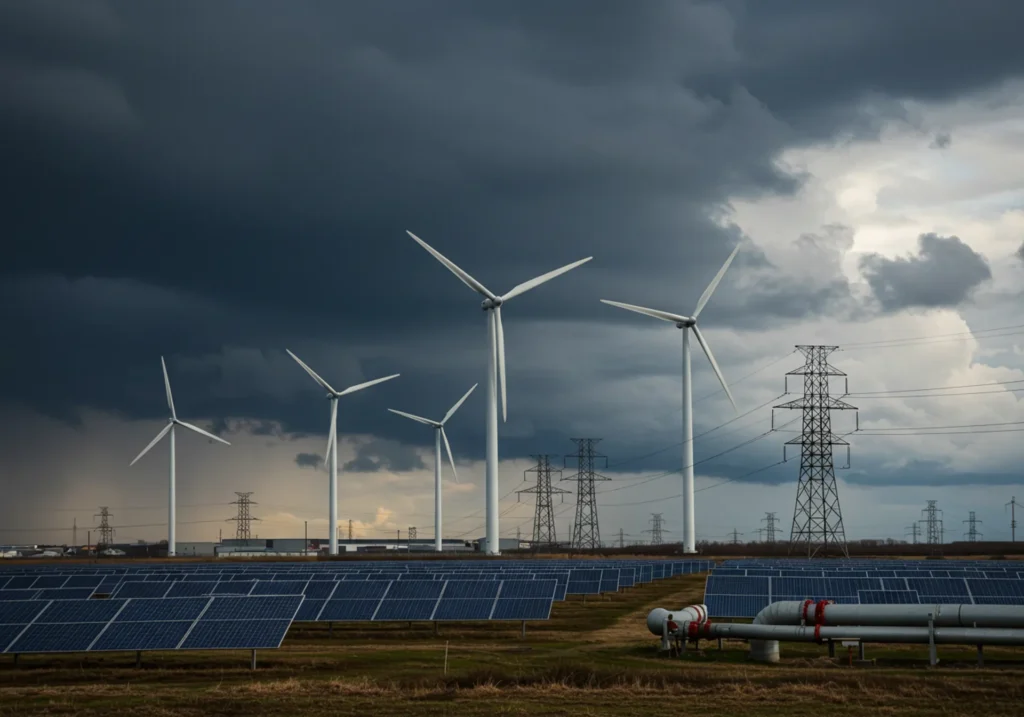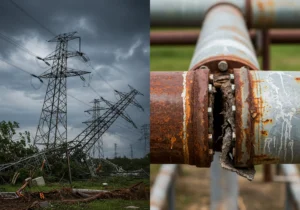What Is Energy Resilience?
Energy resilience refers to the ability of energy systems to anticipate, absorb, adapt to, and recover quickly from disruptions. Unlike traditional energy security, which focuses on supply and demand balance, resilience planning emphasizes system flexibility, redundancy, and adaptability over time. It is not just about avoiding blackouts — it is about ensuring that energy systems can withstand crises while supporting sustainable growth and climate goals.
Shocks vs. Slow-Burn Disruptions
Resilience requires us to think beyond immediate risks. There are two major categories of threats:
- Shocks: Sudden and severe events like geopolitical conflicts, terrorist attacks on infrastructure, hurricanes, earthquakes, or energy trade disruptions. For example, the 2022 Russian invasion of Ukraine forced Europe to scramble for alternative gas supplies.
- Slow-Burn Disruptions: Long-term pressures such as climate change, aging infrastructure, gradual underinvestment, or evolving cyber vulnerabilities. These threats do not hit overnight, but their cumulative effects can destabilize entire regions if not addressed.
Case Study: The European Energy Crisis
Europe’s heavy reliance on Russian natural gas prior to 2022 exposed the vulnerability of supply chains. The sudden cutoff created a shock, while decades of dependency represented a slow-burn disruption. Through initiatives like REPowerEU, the European Union has since diversified supply sources, boosted renewables, and accelerated efficiency programs. This demonstrates how resilience is not reactive but proactive — requiring foresight and diversified investments.
Key Principles of Energy Resilience Planning
Building energy resilience requires holistic strategies that integrate technology, policy, and international cooperation. Some of the most important principles include:
Diversification of Energy Sources
Overreliance on a single supplier or technology can leave systems vulnerable. Diversifying energy mixes through renewables, nuclear, storage solutions, and interconnectors enhances flexibility and reduces systemic risk.
Infrastructure Modernization
Upgrading grids, pipelines, and storage facilities strengthens resilience. Smart grid technologies with digital monitoring and automated fault detection ensure quick recovery during disruptions.
Cross-Border Cooperation
Resilient systems rely on international collaboration. Initiatives like the North Seas Energy Cooperation show how shared infrastructure and interconnectors can strengthen regional resilience. Cooperation also extends to shared strategic reserves and joint responses to cyber threats.
Climate Adaptation and Mitigation
Since climate change is both a slow-burn disruption and an amplifier of shocks, resilience planning must include adaptation measures like storm-proof infrastructure and accelerated decarbonization. The IEA’s Global Energy Review 2025 underscores the urgency of balancing rising electricity demand with sustainable supply.
The Role of Policy and Diplomacy
Energy resilience cannot be achieved in isolation. Governments must enact policies that incentivize diversification, grid modernization, and clean energy investment. Diplomatic efforts are equally critical, as energy interdependence means one country’s disruption can cascade globally.
Policy Tools
- Subsidies and incentives for renewable adoption
- Mandates for energy efficiency in buildings and transport
- Support for innovation in storage and hydrogen
- Regulations requiring cybersecurity standards for energy operators
Diplomacy in Energy Resilience
Diplomacy enables countries to pool resources, align standards, and create contingency plans. For instance, the International Energy Agency (IEA) coordinates emergency stock releases during supply shocks. Regional cooperation platforms, such as the EU Energy Union, also show how diplomacy is essential for resilience planning.
Looking Ahead: Building Resilient Energy Systems for 2025 and Beyond
As energy systems become more digitized, decentralized, and decarbonized, the concept of resilience will continue to evolve. Artificial intelligence and blockchain technologies are already enabling real-time monitoring and peer-to-peer energy trading, creating opportunities for more adaptive, secure networks.
The challenge for policymakers, businesses, and communities is to plan for both the unexpected and the inevitable. This means recognizing that resilience is not just a defensive concept — it is a growth strategy. By investing in resilient energy systems today, nations can protect themselves against shocks while building a foundation for sustainable prosperity.
Conclusion
Energy security in 2025 and beyond is inseparable from resilience. The world must prepare for sudden shocks and gradual disruptions with equal urgency. By embracing diversification, modernization, cooperation, and climate adaptation, energy systems can remain stable and reliable under any scenario. Energy resilience planning is no longer optional — it is the core of energy security itself.



